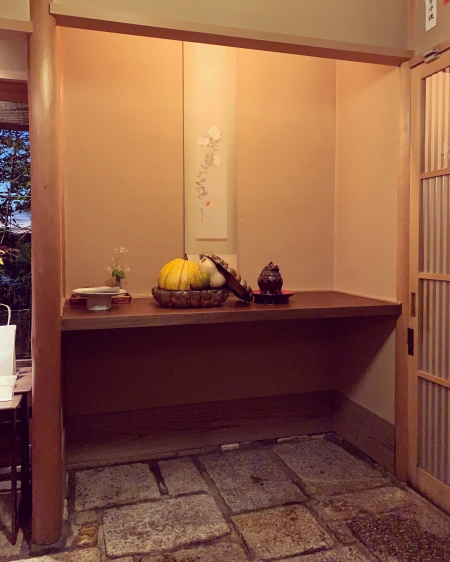気分を受け止める建築
「気分」を受け止める建築と考えて、まず最初に思い浮かんだのが茶室。茶会の度に、亭主がその茶会に込める想いを設えていく。茶室はその亭主の想いを受け止める建築になっている。
想いの範疇に「気分」も含まれるだろう、むしろ、想いを日常の中に刻み込んだものが「気分」かもしれない。
催しがない時の茶室には、床の間にも、その前の待合にも、何もない、空っぽである。茶会に合わせて、亭主がその日の主題を象徴するもの、季節感などを表現するために、掛け軸やお花などを設えていく。茶室には、設えをする場所が用意されており、そこで亭主は想像性を発揮し、自分の想いを込めて、物語をつくり出す。
茶室の設え、というルール、形式の元、亭主が自由に創造性を発揮する。
それを受ける側は、その場に身を置き、何もない空っぽの茶室と、設えられた茶室との落差を感じ、そこにこの茶会の主題や、亭主の想いをくみ取る。
くみ取るとは、目の前にある設えから直接的に何かを得ようとするのではなく、設えに何か、自分なりのものを重ね合わせ、自分なりの解釈で、茶会の主題や、亭主の想いを理解すること。
そのために、設えには、余地というか余白、どのようにでも解釈できる部分があるように思い、その部分が、何もない空っぽの茶室と、設えられた茶室との落差を感じさせてくれて、掛け軸やお花や器や絵画などの設えの単なる見本市となるのを避け、そこに自分なりの物語をつくり出すことができる。
ならば、「気分」を受け止める建築とは、「気分」を込めることができる、設えができる場が用意されている建築のことで、何もない空っぽの建築と、自分なりの解釈ができる余地や余白がある設えられた建築との落差から自分なりの物語を紡ぎ出すことができる建築となる。
"Architecture that catches your mood"
The tearoom was the first thing that came to my mind when thinking of an architecture that accepts "feeling". Every time a tea party is held, the hoster sets up the feelings for the tea party. The tea room is an architecture that accepts the thoughts of the host.
The category of feelings may include "mood", but rather, the "feeling" may be something that engraves the feelings in daily life.
The tea room when there is no event is empty, with nothing between the floor and the waiting room in front of it. In line with the tea party, the host will set up hanging scrolls and flowers to represent the theme of the day and the seasons. In the tea room, there is a place to set up, where the hoster demonstrates his imagination and creates a story with his own thoughts.
The rules and form of the tea room setting, the owner of the tea ceremony is free to demonstrate creativity.
The person who receives it sits on the spot and feels the difference between the empty tea room and the tea room that has been set up, and captures the theme of the tea party and the thoughts of the host.
Rather than trying to get something directly from the setting in front of you, Kumitake is something that you put on your setting, and your own things, To understand the thoughts of
For that reason, the setting seems to have room or margin, which can be interpreted in any way, and that part makes me feel the difference between the empty tea room and the tea room that was set up. You can avoid the mere trade show of hanging scrolls, flowers, bowls, and paintings, and create your own story there.
Then, architecture that accepts "mood" is an architecture that has a place where you can put in "mood" and can be set up, and there is room for empty interpretation and your own interpretation. It becomes an architecture that can spun out its own story from the head of the building with margins.

